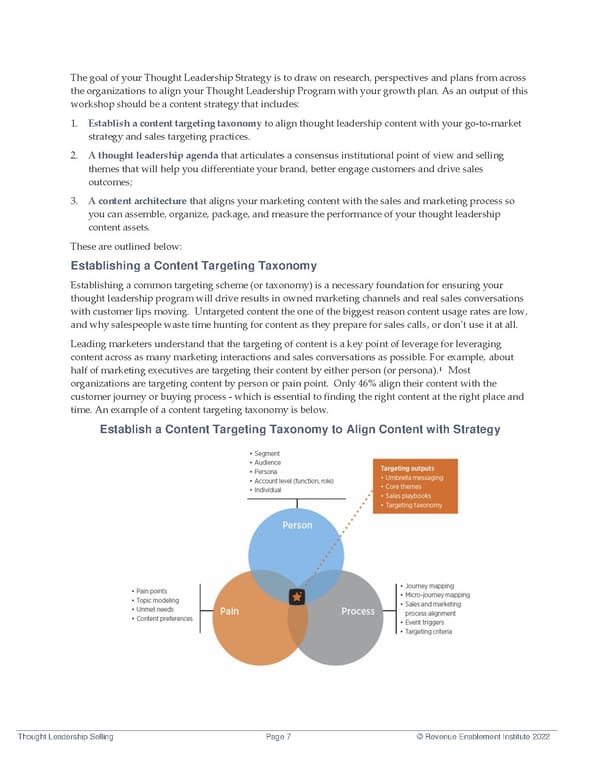The goal of your Thought Leadership Strategy is to draw on research, perspectives and plans from across the organizations to align your Thought Leadership Program with your growth plan. As an output of this workshop should be a content strategy that includes: 1. Establish a content targeting taxonomy to align thought leadership content with your go-to-market strategy and sales targeting practices. 2. A thought leadership agenda that articulates a consensus institutional point of view and selling themes that will help you differentiate your brand, better engage customers and drive sales outcomes; 3. A content architecture that aligns your marketing content with the sales and marketing process so you can assemble, organize, package, and measure the performance of your thought leadership content assets. These are outlined below: Establishing a Content Targeting Taxonomy Establishing a common targeting scheme (or taxonomy) is a necessary foundation for ensuring your thought leadership program will drive results in owned marketing channels and real sales conversations with customer lips moving. Untargeted content the one of the biggest reason content usage rates are low, and why salespeople waste time hunting for content as they prepare for sales calls, or don’t use it at all. Leading marketers understand that the targeting of content is a key point of leverage for leveraging content across as many marketing interactions and sales conversations as possible. For example, about half of marketing executives are targeting their content by either person (or persona).1 Most organizations are targeting content by person or pain point. Only 46% align their content with the customer journey or buying process - which is essential to finding the right content at the right place and time. An example of a content targeting taxonomy is below. Establish a Content Targeting Taxonomy to Align Content with Strategy Thought Leadership Selling Page 7 © Revenue Enablement Institute 2022
 Thought Leadership Selling Flipbook Page 6 Page 8
Thought Leadership Selling Flipbook Page 6 Page 8